|
The MAP News |
|
|
FEATURE STORY
Mangroves under Threat
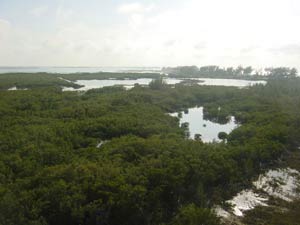 There once was a beautiful tropical island afloat in the pale blue waters of the Caribbean called Bimini, immortalized by Ernest Hemingway in his well-known novel “Islands in the Stream.” Luxuriant coral reefs and mangroves provided safe refuge for bountiful marine life including a myriad of fish, sharks, sea turtles and sea birds. Its quiet beaches and laid-back residents lent Bimini a special flavour of a place where sports fishermen such as Hemingway went to catch marlin and bonefish. Then everything changed as industrial-style tourism had come to Bimini. The island is now replete with five-star hotels, condos, restaurants, golf courses and marinas, all meant to attract the wealthy tourists. Large swaths of mangroves were cleared, shorelines extended by using land fill, threatening corals and sea grasses, marine life and a way of life for the local people. For more than 20 years the Bahamas government has pledged to turn large parts of Bimini into a Marine Protected Area. To its shame, it has failed to act on its promises. READ MORE AFRICA Off the African coast, a new tool in the fight against climate change: drones 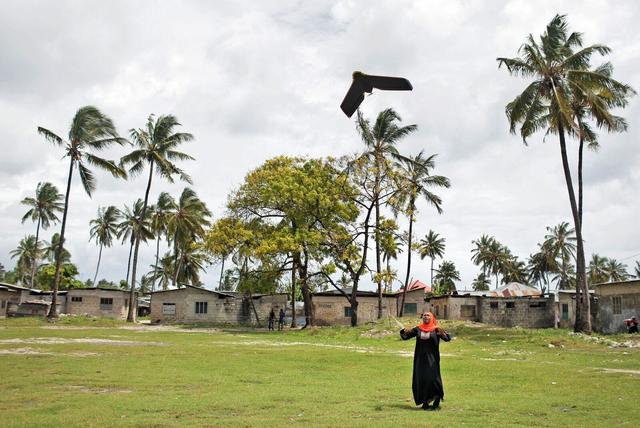 TANZANIA - The Zanzibar Mapping Initiative is the world's most ambitious mapping project deploying small-scale drones. The project was born out of a partnership with the World Bank and the Zanzibar Commission for Lands and the State University of Zanzibar, modeled after a drone mapping and digitization project called Dar Ramani Huria, a Swahili phrase that translates to "The Open Map of Dar es Salaam." Mapping and land management remains a frustrating and expensive problem across the African continent. A mere 2.9 percent of Africa is mapped at a local scale, compared to 87 percent of Europe, according to a 2007 report from the United Nations. As the population swells -- Tanzania's national average population growth rate is one of the fastest in the world -- a lack of up-to-date maps makes for messy land disputes and hamfisted attempts at urban planning. As the lush urban-island of 1.3 million people confronts the creeping threat of climate change and an uptick in natural disasters, high resolution aerial photography and a modern spatial data infrastructure can not only facilitate urban planning but assist government officials in climate-proofing the island. READ MORE ASIA Mangrove cover shows no significant increase ‘despite plantation efforts’ 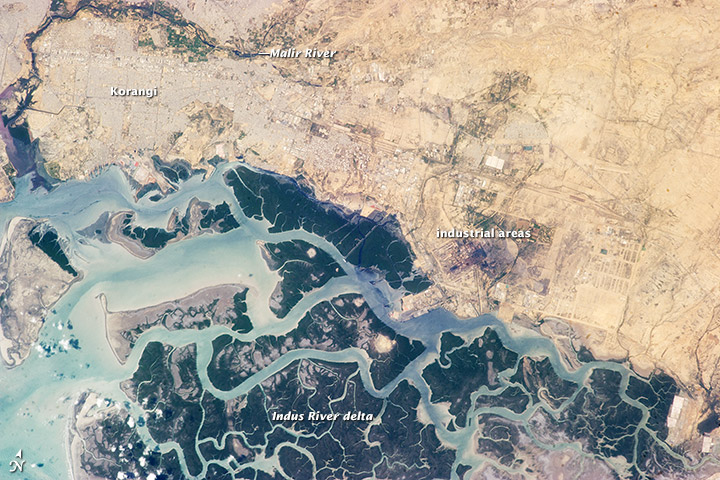 INDIA - Once rated the fifth largest mangrove forest in the world with a cover as high as 250,000 hectares a few decades ago, mangroves of the Indus delta now rank lower than 15th on the (global) list and have decreased to 98,014 hectares, indicating two to three per cent annual loss. No significant success has been achieved to increase its size despite attempts for mass mangrove plantation in the delta. These observations are part of a paper published in an international journal. Titled The Effect of Global Warming (Climate Change) on Mangroves of Indus Delta with Relevance to other Prevailing Anthropogenic Stresses, A critical review, the paper has been published in July this year in the European Academic Research journal. READ MORE Let's mend our ways and save mangroves INDIA - If there’s an ecosystem that can be termed as a cornucopia of life, it’s mangroves. These tiny coastal forests by the coastlines host the evening roosts of spoonbills, kingfishers, egrets, herons and hundreds of such wetland bird species in its arching canopy. A breeding ground for fish, it also serves as a natural habitat for a variety of flora and fauna. Perhaps for the same reason, Wetlands International, a global non-profit organization dedicated to the conservation and restoration of wetlands, has categorized mangroves as one of the most important ecosystems. Kerala once had extensive patches of mangroves along its west coast. A majority of them were lost following deforestation, human encroachments, soil drifts and natural calamities. Recently, College of Forestry, which is affiliated with Kerala Agricultural University, carried out a bird survey along the central Kerala's mangroves, in collaboration with the state forest department, Centre for Wildlife Studies and some non-governmental organizations of Thrissur district. The survey was a real watershed moment in the way we look at mangrove conservation efforts. READ MORE Dept aims for dugong preservation 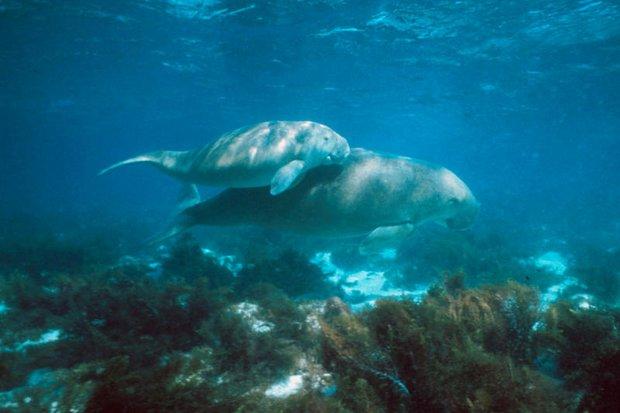 THAILAND - The Department of National Parks, Wildlife and Plant Conservation plans to strengthen measures for preserving and conserving the dugong population with the local community's participation, saying the plan also includes increasing seagrass habitat which is the main food source for the seacow-like mammal. Thanya Nethithammakul, chief of the Department of National Parks, Wildlife and Plant Conservation, said dugong populations are being threatened by a loss of fertility in the seagrass habitat, and disturbance due to fishing gear and man-made hunting. The department needs to develop more effective measures to limit the losses and increase their population, he said. Many seagrass habitats were now being destroyed as some locals collect tiny and colourful fish found near seagrass sites. READ MORE Maharashtra to involve coastal villages protect state’s mangrove forests INDIA - To protect the state’s mangrove forests, the government is mulling to take help from the residents of 60 coastal villages. Maharashtra has 15,088 hectares of mangroves.Last month, the government announced a new policy to protect mangroves on public and private land by creating ‘mangrove co-management committees’, which will include residents from villages located near the mangrove forests along the 720-km long coastline. These committees will be responsible for protecting the forests and using resources to generate jobs locally.“The committees will prepare a long-term plan for conserving mangroves in their areas and take necessary action to protect and grow them,” read the government resolution (GR).In Raigad, which has the largest stretch of mangrove forests in the state, 25 villages have been shortlisted for the project. Sindhudurg has 12 villages, Ratnagiri 10, Palghar nine and four from Thane. The government has set aside Rs15 crore for the project. READ MORE AMERICAS New analysis suggests that preserving rare species is vital to tropical forests  USA - The world's tropical forests are in "a critical state" in which the extinction of rare tree species could be a tipping point, say scientists who have developed an analytical method to map their biodiversity. "We are in the midst of an extinction crisis," said Jayanth R. Banavar, provost and senior vice president at the University of Oregon and previously at the University of Maryland in College Park. "We are losing species perhaps more rapidly than ever before. It is the biodiversity of the species that keeps our planet the way it is. These species have evolved over many, many millennia. A species once lost is gone forever." In a paper published Oct. 18, 2017 in the journal Science Advances, Banavar, a physicist, and co-authors from three other universities unveiled their findings, which are based on a mathematical framework relying on a mechanistic birth-death-immigration model of an ecosystem. The researchers suggest that the numerous extremely rare species may be vitally important to maintaining biodiversity and survival as forests undergo worldwide climate change and human activities. READ MORE The Peruvian Amazon Is In Danger PERU - The Peruvian Amazon is home to millions of animal, insect, and plant species making it one of the most biodiverse places on the planet. The Amazon Rainforest is often referred to as the “lungs of the earth” because its responsible for soaking up the carbon dioxide emitted into the atmosphere. As the detrimental impacts of climate change increase, specifically mining and deforestation in the Amazon, it is evident that all ecosystems in the world are connected and at risk. The tropical forests of Peru and all of South America play critical roles in global carbon cycling and produce weather and climate around them. Nine Wake Forest students eagerly adventured to see the Peruvian Amazon’s natural beauty and wonder for themselves as a part of a duel study-abroad course in tropical ecology and science writing led by biology Professor Miles Silman and journalism Professor Justin Catanoso. The students quickly learned from first-hand accounts that all ecosystems are in trouble if we don’t change. READ MORE Biologist starting over after Hurricane Irma  US VIRGIN ISLANDS - For Caroline Rogers, an internationally known expert on coral reefs and the only USGS employee stationed in the Virgin Islands, Hurricane Irma swiftly wiped away normalcy at home, at work, and in the field. On September 6 Hurricane Irma was at the peak of its strength—with top sustained winds of 185 miles per hour and 225-mile-per-hour gusts, according to the National Hurricane Center—when it struck the island of St. John, where Rogers has lived and worked as a marine biologist since 1984. Rogers rode out the hurricane with friends in a concrete home. At the height of the storm, she felt the solid walls trembling. By day’s end, Rogers’ wooden house still had its roof, although two windows were smashed, and nearby homes had become piles of broken wood. Her office in a National Park Service building at Virgin Islands National Park was roofless. Its walls had exploded, and her books, papers and most of her equipment were ruined. Sediment can smother corals, but Hurricane Hole has no sediment-bearing freshwater streams. Its clear waters are habitat for an entire community of marine life, including Montastrea corals and squirrelfish. And the hurricane had profoundly altered the unique ecosystem Rogers discovered in 2009 and has been monitoring since then – a group of mangrove-lined bays sheltering 30 hard coral species that are normally found on deeper reefs. READ MORE Here's why your sustainable tuna is also unsustainable  USA - Tuna is one of the most ubiquitous seafoods. It can be eaten from a can or as high-end sashimi and in many forms in between. But some species are over-fished and some fishing methods are unsustainable. How do you know which type of tuna you're eating? Some tuna is certified as sustainably caught by groups such as the Marine Stewardship Council (MSC) that set standards for sustainable fishing. But these certifications are only good if they are credible. The Western and Central Pacific skipjack tuna fishery is one of the world's biggest. Some of the tuna caught here carries the MSC's blue label, identifying it as the best environmental choice for consumers. But the same boats making that sustainable catch may also use unsustainable methods to catch unsustainable fish on the same day. The On the Hook coalition sees this as at odds with the MSC certification,. Yes, sustainable and unsustainable fish can be separated; there are people on board whose sole job is to do this. But rewarding fishermen for their sustainable catch, while allowing them to fish unsustainably, dupes consumers into supporting companies that take part in bad behaviour. READ MORE EUROPE Warning of 'ecological Armageddon' after dramatic plunge in insect numbers 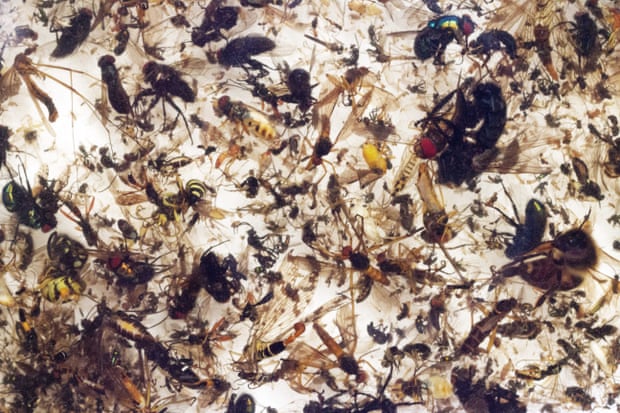 GERMANY - The abundance of flying insects has plunged by three-quarters over the past 25 years, according to a new study that has shocked scientists. Insects are an integral part of life on Earth as both pollinators and prey for other wildlife and it was known that some species such as butterflies were declining. But the newly revealed scale of the losses to all insects has prompted warnings that the world is “on course for ecological Armageddon”, with profound impacts on human society. The new data was gathered in nature reserves across Germany but has implications for all landscapes dominated by agriculture, the researchers said. READ MORE Dear Friends, We at the Down To Earth magazine take this opportunity, when we have entered the 26th year of publishing, to thank the millions of Down To Earth (DTE) readers down the years who have stood by us and shaped this magazine. DTE is grateful to every single one right from our earliest subscribers in May 1992 to the ones who have joined the DTE family over the years. We invite you to join our family of DTE Subscribers and support us in spreading the green message. The DTE magazine’s Founder, the late Anil Agarwal, being the true visionary that he was, wanted DTE to be the one-stop source for people to understand and address the environmental issues, and it has lived up to its commitment. Though he is sadly no more, his passion for research to tackle the environment issues and guide students, academicians, decision makers and professionals have lived on through his team and the Down To Earth magazine. In today’s world DTE is more relevant than when it was conceived and DTE striding successfully into its 26th year of publishing is a clear sign of its usefulness. You can get to know more about Down To Earth by visiting us at: http://www.downtoearth.org.in |
ACTION ALERTSPETITION: Cameroon: Release forest defender Nasako Besingi SIGN NOW!
|
Mangrove Action ProjectClick here to view past newsletters |
|
Search News Archive
Thursday, October 26, 2017
MAP News Issue 428, October 28, 2017
Thursday, October 12, 2017
MAP News Issue 427, October 14, 2017
|
The MAP News
427th Edition October 14, 2017 |
|
|
FEATURE STORY
Alarm as study reveals world’s tropical forests are huge carbon emission source
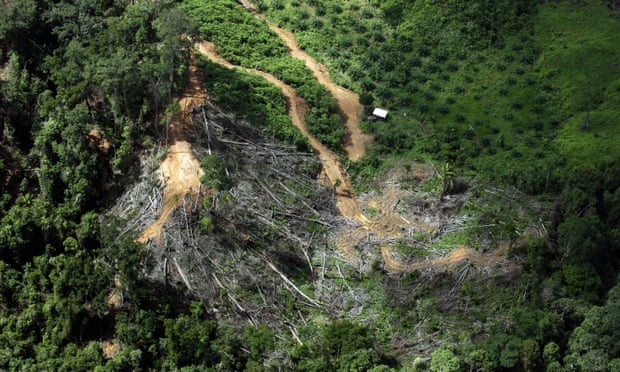 GLOBAL - The world’s tropical forests are so degraded they have become a source rather than a sink of carbon emissions, according to a new study that highlights the urgent need to protect and restore the Amazon and similar regions. Researchers found that forest areas in South America, Africa and Asia – which have until recently played a key role in absorbing greenhouse gases – are now releasing 425 teragrams of carbon annually, which is more than all the traffic in the United States. This is a far greater loss than previously thought and carries extra force because the data emerges from the most detailed examination of the topic ever undertaken. The authors say their findings – published in the journal Science recently – should galvanise policymakers to take remedial action. “This shows that we can’t just sit back. The forest is not doing what we thought it was doing,” said Alessandro Baccini, who is one of the leader authors of the research team from Woods Hole Research Center and Boston University. “As always, trees are removing carbon from the atmosphere, but the volume of the forest is no longer enough to compensate for the losses. The region is not a sink any more.” READ MORE Africa Cameroon palm oil campaigner arrested in crackdown on activists 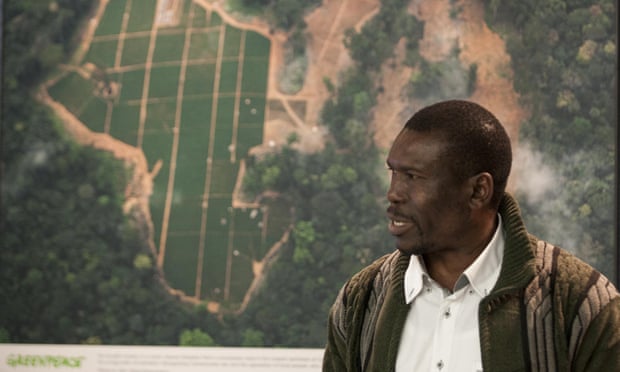 CAMEROON - A prominent campaigner against palm oil plantations has been arrested amid a growing crackdown on environmental and human rights activists in Cameroon, according to local lawyers and NGOs. Nasako Besingi, who has led opposition to a US-funded 73,000 hectare farm in a biodiverse rainforest, is among more than 100 individuals who have been detained during an escalation of tension between the predominantly French-speaking authorities and the country’s large English-speaking minority. Supporters of Besingi claim the authorities are using the “anglophone crisis” to put pressure on the campaigner, who has been jailed, threatened, and sued on several previous occasions. READ MORE Governing mangroves: From Tanzania to Indonesia  TANZANIA - scientists from the Center for International Forestry Research (CIFOR), coordinated by Principal Scientist Esther Mwangi, set out to explore tenure and governance arrangements of mangroves through a global review. They have so far conducted case studies in the Rufiji delta of Tanzania, which has one of the two most extensive mangrove areas in East Africa, and in Lampung province in Indonesia, the country with the largest mangrove forest cover in the world, accounting for up to 22 percent of the world’s mangroves. At these sites, scientists analyzed national-level legal and policy frameworks, coordination across government agencies, and institutional arrangements at the local level — looking at “how decisions are made and the ability to implement them, both in terms of resources and capacity,” says the Coordinator of the Tanzania study, Baruani Mshale. READ MORE Asia MAP-Asia staff attended the Daimler Review Meeting in India  INDIA - Three MAP-Asia staff (Jim Enright, Jaruwan Enright (Ning) and Udomsak Pariwatpan (Em)) participated in Daimler Review Meeting "Involving communities in the restoration and rehabilitation of tropical mangrove ecosystem in Asia" held at Chennai Park Hyatt Hotel and the YWCA International Guest House, Chennai, India on 19-20 September 2017. The meeting was co-organized by Global Nature Fund (GNF) of Germany and the Center for Research on New International Economic Order (CReNIEO) based in Chennai. There were 24 participants from 7 organizations in 5 countries (The Center for Research on New Economic Order (CReNIEO) and Nature Environment & Wildlife Society (NEWS) from India, EMACE Foundation and Nagenahiru Foundation from Sri Lanka, The Fisheries Action Coalition Team (FACT) from Cambodia, The Mangrove Action Project (MAP) from Thailand, The Global Nature Fund (GNF) and Daimler AG from India & Germany. READ MORE Conserve mangroves to save Mumbai INDIA - Mumbai historical records indicate that there were several islands around the city during 1670. However, the Britishers, who were ruling the country, identified the importance of these islands for commercial purpose. They deforested the fringing mangroves and reclaimed these islands into one continuous landmass, which later came to be known as “Greater Bombay”. Since then the developmental and eventually population pressure rapidly increased and being the coastal area, it took the toll of mangrove land. During the process of deforestation and reclamation, a few mangrove patches were still left in the heart of the city, which proves that today’s megacity had a luxuriant past of mangrove forests. Rapid developments like housing, industrialisation, pollution and increasing population of Mumbai has resulted into degradation of mangroves. There are two important creeks, Vasai Creek towards north and Thane Creek towards south where luxuriant mangrove patches are still remaining. Otherwise the state govt agencies have failed to protect this important, productive mangrove ecosystem from building mafias. The worst disturbed area in Mumbai is the entire western front except Carter Road where the mangroves have grown and have also registered an increase in height in the last 10 years. This has been possible due to the participation of citizen’s forums fighting individually. READ MORE Americas Marvellous Mangroves - 10 years in Brazil  BRAZIL - It has been over ten years since work started to translate and adapt Marvellous Mangroves for use in Brazilian schools by MAP’s partners, Instituto BiomaBrasil (IBB). In April, 2006, the process began when IBB’s Clemente Coelho Jnr. and Renato Almeida observed and participated in a MM workshop held in Tilapa on the Northwest coast of Guatemala. It was only six months later that MAP Education Director Martin Keeley and Elaine Corets (then South American co-ordinator for MAP) rejoined Clemente and Renato together with several teachers and scientists in Cariacica, southeast Brazil, and started work on adapting and translating MM into Portuguese for use in Brazilian schools. Marvellous Mangroves has enabled IBB to become recognised by the Ministry of Environment as an institution dedicated to the conservation of mangroves and the implementation of extensive educational initiatives involving marine protected areas. Many university students actively support IBB initiatives as a practical part of their studies. MM has made a long-lasting impact on regional and municipal authorties, says Clemente. READ MORE Organizations worldwide condemn UN aviation agency’s biofuel plans  MEXICO - Environmental and development organisations from five continents have written to the UN’s aviation agency (ICAO) condemning a proposal for large-scale use of biofuels in planes. The letter signed by 96 NGOs states that using biofuels on a vast scale will inevitably lead to further palm oil expansion, which will cause more deforestation, increasing climate-changing emissions, and more landgrabbing and land and human rights abuses. The proposals will be discussed (October 11-13) by the International Civil Aviation Authority (ICAO) at its Conference on Aviation and Alternative Fuels in Mexico City. According to ICAO’s “Vision” proposal, the aviation industry would use 5 million tonnes of biofuels a year from 2025, which will be scaled up to 286 million tonnes by 2050 - more than three times the amount of all biofuels produced today [2]. It is part of an attempt by the aviation industry and ICAO to maintain high levels of aviation growth while presenting them as “carbon neutral” from 2020. Mary Louise Malig from the Global Forest Coalition, one of the signatories of the Open Letter said: “Biofuels are already responsible for large-scale deforestation, and for more land-grabbing, human rights abuses, loss of food sovereignty and food security. Fuelling planes in addition to cars with them would magnify those serious impacts, while doing nothing to address climate change.” READ MORE Flamingos return to mangrove area in Progreso MEXICO - The mangrove area of the old narrow road that was used during the time of the railroad and that connected this port with the towns of Chicxulub Pueblo and Conkal has become a nesting site for flamingos. A little more than a kilometer south of the Progreso-Chicxulub trail is the nesting area of flamingos, wading birds that usually inhabit the mangrove area of Uaymitún, but which have begun to congregate in the mangrove swamps near Progreso where they have found food, explained the farmer Remigio Cuytún. To get to the area where the flamingos are located, we travel along the road that leads to the old municipal dump. The dense mangrove growing in that area is a result of the institutional program for the protection, conservation, restoration and reforestation of the mangrove that has been carryied out since October 2014 by the Ninth Naval Zone through its Port Oceanographic Research Station. Flamingos flock to less than 20 meters from the narrow old road, from where they are easily seen, and they occupy an area of about 500 meters. According to the farmer Remigio Cuytún ,for several years, these birds were not seen in this area. READ MORE There was an article in the Guardian on Friday about Nasako Besingi. I didn't know you knew him. https://www.theguardian.com/world/2017/sep/29/cameroon-palm-oil-campaigner-arrested-crackdown-activists Front Line Defenders: https://www.frontlinedefenders.org/en/profile/nasako-besingi https://www.frontlinedefenders.org/en/case/nasako-besingi-arbitrarily-arrested-and-detained-incommunicado "Nasako Besingi has been leading his community in the protests against the development of palm oil plantations by the American agribusiness company Herakles Farm." It seems pressure has to be put on the US company, Herakles Farm, the one implementing 73,000 ha of oil palm plantation. Jim Hi Jim, thanks for sending this. I had met Nasako many years ago at the In the Hands of the Fishers workshop in Cameroon. He was one of the few English speakers there, and was very involved with trying to protect the rights of local communities at the time. He was then, as he obviously is now, a very dedicated, uncompromising activist. This Herakles Farms company in the US needs to be spotlighted as the blight on the environment and the bane on human rights it is! Alfredo, |
ACTION ALERTSPETITION: Cameroon: Release forest defender Nasako Besingi SIGN NOW!
EPIC REPORT Download the paper ‘Mangrove Restoration: to plant or not to plant’, available in 7 languages.
|
Mangrove Action ProjectClick here to view past newsletters |
|
Marvellous Mangroves - 10 years in Brazil
May 2017

Students from the Escola Varzea Do Una from San Jose Da Coroa Grande, Pernambuco Provice, Brasil, and their marvellous mangroves poster. Mural and photo by Prof. Flaviane Paes.
It has been over ten years since work started to translate and adapt Marvellous Mangroves for use in Brazilian schools by MAP’s partners, Instituto BiomaBrasil (IBB). In April, 2006, the process began when IBB’s Clemente Coelho Jnr. and Renato Almeida observed and participated in a MM workshop held in Tilapa on the Northwest coast of Guatemala. Organised in conjunction with the local NGO Amigos Del Bosque and CORALINA - based in San Andres, Colombia, - Tilapa was the launch for teachers of the Guatemala (Spanish) version of MM.
It was only six months later that MAP Education Director Martin Keeley and Elaine Corets (then South American co-ordinator for MAP) rejoined Clemente and Renato together with several teachers and scientists in Cariacica, southeast Brazil, and started work on adapting and translating MM into Portuguese for use in Brazilian schools.
Two years later in summer 2008 the first training in the use of the MM took place and involved 55 teachers from the city of Cariacica, in the Espirito Santo State school system. The workshop was a part of a planned activity between the Projeto Povos e Mangues (Peoples and Mangroves Project) of the Municipal Secretary of Education (SEME) and the Secretary of Environment (SEMMAM). It was run by staff from the Instituto BiomaBrasil – Management and Conservation of Coastal Tropical Wetlands (IBB).
This workshop was shortly followed by a multi-state national workshop in Brasilia. Since that time the numbers of schools, teachers and students who have been exposed to MM in Brazil is impressive. Clemente reports that well over 100 schools, 400 plus teachers and more than 12,000 students in five states have learned the wonders of mangroves through the MM program.
Clemente stresses that MM provides the resources needed to take an in-depth look at mangrove ecosystems. “Both students and teachers are amazed by the ecosystem's beauty and the importance,” he says. “The increasing respect and passion that they develop towards mangroves is noticeable.”
MM, he adds, has proven to be an invaluable tool for supporting teaching methods as a whole, especially in the context of deficient teacher training (25% of all Brazilian teachers have no access to further education). Clemente adds that both the experiments and field activities found in MM are extremely powerful and open the minds of both students and teachers. “The program does, without doubt, change students' atitudes towards mangrove ecosystems,” he says.
(Left photo) The first MM Brazil workshop held in Cariacica in 2006. MAP’s education director Martin Keeley top far right. (Right photo) Students at Atividade a Rede da Vida with the Birds and Beaks activity.
The MM training has led to individuals and communities making concentrated efforts to protect and preserve mangroves where they live and Clemente cites some specific examples:
* Cariacica: Following the teachers’ initial 2-year program, the municipality supported the production of an animated movie involving the schools which had the Marvellous Mangroves experience.
*Maragojipe (BA): Dozens of schools have held demonstrations to draw public attention to the conservation of mangrove ecosystems.
*Cananéia (SP): The experience with MM has led schools to produce and edit a poetry book on the theme of mangroves.
*Tamandaré (PE): Following classroom activities, the Costa dos Corais protected area has been used as an outdoor laboratory with data collected provided to São Paulo University.
*Porto de Pedras (AL): Following classroom activities, additional field trips were also taken to take part in sea-cow releases in conjunction with the Centro de Mamíferos Aquáticos, Instituto Chico Mendes (CMA/ICMBio) - the federal agency for the protection of biodiversity.
*São Miguel (AL): Classroom activities focussed on mangrove ecosystems plus littering. The teachers used social media to promote their work, calling the community’s attention to this issue. The same teachers organized beach clean-ups in the municipality’s mangroves, as well as taking part in sea-cow releases, accompanied by an IBB monitor.
*São José da Coroa Grande (PE): The MM was introduced by the municipal education authority to all schools where it continues to be taught.
All teachers who have participated in MM are part of a closed group on Facebook - Os Maravilhosos Manguezais do Brasil - where they exchange experiences in different municipalities.
Marvellous Mangroves has enabled IBB to become recognised by the Ministry of Environment as an institution dedicated to the conservation of mangroves and the implementation of extensive educational initiatives involving marine protected areas. Many university students actively support IBB initiatives as a practical part of their studies.
MM has made a long-lasting impact on regional and municipal authorties, says Clemente. For example, the Mayor of Victoria, in his re-election campaign, paid for MM workshops in every school. The the municipalities of Cariacica and Fundão consistently provide ongoing private and public support with teacher participation in the managment of marine protected areas. In another municipality, teachers participate on the management board of the Costa dos Corais protected área in Pernambuco province, as well as organising protection and awareness activities, community-based recycling projects, and continually promoting debates in the social media.
All-in-all MM is here to stay in Brazil’s schools.
(Left) Teachers field trip: Interview with the fishermen of the Várzea do Una community gathering information about which type of fish is most hunted by local fishermen. (Right) teachers from conducting the oil spill activity from MM during a workshop in Vitoria, Espirito Santo Province.
Year 5 from Edna Moyle Elementary school, Grand Cayman, pilot the new Marvellous Mangroves interactive website. Bird spotting in the Central Mangroves (left); Teacher Janice Brown monitors computer access to the new site, while another student inputs to the site on the smart board her field trip experiences.
Launch of Marvellous Mangroves International Educational Website
Teachers and students all over the mangrove world are connecting thanks to a new interactive website launched by the Mangrove Action Project (MAP). Marvellousmangroves.org has been several years in the making, says MAP Education Director Martin Keeley, “And we have just spent the last couple of weeks working with Year 5 students at Edna Moyle Primary School, Northside, Grand Cayman, to iron out the bugs and make sure the site is up and running.”
The site is an extension of the Marvellous Mangroves education program which was first introduced into Cayman’s schools in 2001 and has, since then, been taught to every Year 5 at every school class where it is part of the science/social studies curriculum. It is currently being taught by Catherine Childs, Education Director of the Cayman Islands National Trust, and is sponsored by Caribbean Utilities. Since its introduction it has been translated and adapted for use in 13 countries worldwide.
“The primary purpose behind marvellousmangroves.org is to allow teachers and students around the world to explore the wonderful world of mangroves in their own country in their own language,” Keeley, who is also UCCI Cayman Brac Campus Director and founder of the Mangroves & Reefs Education Project, explains. “The site was designed under the supervision of MAP’s IT whiz, Leo Thom, and follows the same five section structure as the Marvellous Mangroves teachers guide.”
“Teachers and students will not only be able to explore mangrove ecology in their own countries - where the site allows teachers to pose questions and students to answer them and record their own findings - it will enable them to find out what their counterparts in other countries are doing and seeing.”
“This Marvellous Mangroves Program is so worth while!” exclaims Ms. Janice Brown, Year 5 teacher at Edna Moyle Primary, whose class enabled the pilot to be undertaken. “It not only teaches students about the values and vital need to protect the mangroves but involves the students learning in an interactive way through the website and through fascinating, outdoor field trips. Education at its best!”
The students were first introduced to the world on mangroves through classroom activities by the Trust’s Catherine Childs
From the field trip to the new website. Students taste testing salt on a black mangrove leaf (left) and checking up on an upside down jellyfish (right) while MAP education director Martin Keeley supervises inputting data on the new MM website.
GO ONLINE AND REGISTER NOW!! www.marvellousmangroves.org
Left: Cayman Islands National Trust’s Education Director Catherine Childs working with Year 5 Edna Moyle Primary School in Grand Cayman with the mangrove species activity. Right: The “Explore” page on the new MM website created by MAP’s IT specialist, Leo Thom.
who also posed several skill testing questions on the new site. Classroom activities were followed by a field trip to the Central
Mangroves run by Sea Elements and a final classroom follow-up when students wrote and drew their impressions and entered them on the classroom’s smart board.
“Recording on the website took a little getting used to,” says Ms. Brown, “But once they did, the students were able to transfer their findings from their notebooks to the site. The Marvellous Mangroves programme – whether it’s the actual hands-on exploration or the new website recording - facilitates the use of different learning skills in a way that is very valuable,” she adds.
Using the marvellousmangrove.org site is simple. Students and teachers need to register on-line. Once they have done this and approved by the site moderator, they can then input their observations and findings – not to mention photographs and data of all kinds. These must also be approved by the moderator – another environmental educator, Ms. Marnie Laing, who will then post the information on the site. Ms. Laing was a previous National Trust Education Director who taught the program for several years before Ms. Childs took over, so she is very familiar with the world of mangroves.
“We live in a world where the internet and social media are dominating factors,” says Mr. Keeley. “But what we tend to forget is that many students and teachers in other mangrove countries don’t even have science labs – often not even reliable electricity. Marvellous Mangroves bridges that gap by providing hands-on science activities. We also give many schools studying mangroves light source microscopes and magnifying lenses to help them set up Mangrove Cubs. These, in turn, provide the core for science labs to be established.
“The mangrovellousmangroves.org website will also help to bridge that gap so students can explore and report data using the schools’ computer labs (if they have one) and teachers’ cell phones.”
For more details about Marvellous Mangroves contact:
Martin A. Keeley
Global Education Director
Mangrove Action Project
17, Beach Drive
Cayman Brac
KY2-2200
Cayman Islands
Tel: (345) 948-0319 Cell: (345) 526-5072
http://mangroveactionproject.org/mangrove_curriculum/
www.marvellousmangoves.org
The new Myths & Legends book from Marvellous Mangroves. Only $20
+ $5 P&P. From: pisgahpress@gmail.com
M
-
The community of adults and youth in Cayman Islands has come together recently to release a series of educational videos. Each is geared to...
-
By Alfredo Quarto, Program & Policy Director Co-founder, MAP There is a rather urgent situation concerning the bio-invasion of the Son...
-
By: Isabel Robinson, MAP Volunteer Intern Some months ago I decided to come to Thailand and do an internship in mangrove conservation, ...
MAP News Issue #596 = April 20, 2024
ENTRIES NOW OPEN! Mangrove Photography Awards 2024 10 Years Celebrating Mangroves GLOBAL - MAP has launched our 10th Mangrove Photograp...























